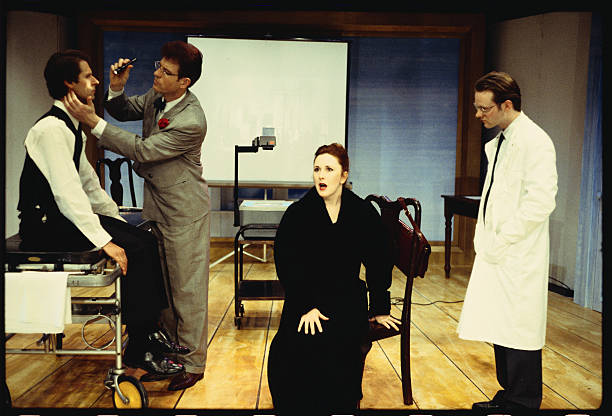In 1985, Oliver Sacks had previously published one of his best books, Awakenings. The book that would later turn into a movie, starring Robin Willians, was a success in Britain. But, in the United States, it was not a big success and would not catapult him into fame. Sacks’ break came in 85, with a collection of medical cases, specifically in neurology, that encompassed a wide range of complex cases about the mind and its twists. That famous book would become his stamp as medicine’s poet laureate, and it would follow a cultural phenomenon. We now know this book as The Man Who Mistook His Wife for a Hat.
The Man Who Mistook His Wife for a Hat and Other Clinical Tales
Medical Cases for The Mind and The Soul
Why did The Man Who Mistook His Wife for a Hat became a success with the everyday reader? The answer can be easily found within Sacks’ masterful prose and deep insight into the human brain. Sacks’ cases draw the human eye and mind to examine people’s failing when dealing in despair through a neurological disorder. The first case of the book, named after the title, quickly hits you with mystery, surprise, and wonder.
The Man Who Mistook His Wife for a Hat was a patient of Oliver Sacks’ when he was the resident neurologist in a hospital in the Bronx, New York. Dr.P, as Sacks identifies, was a music teacher who suffered from visual agnosia (unable to recognize faces). He suddenly had trouble with his vision, not able to see faces and confusing objects with them. As Sacks later explains, Dr. P had “Maggoo-like” vision, confusing parking meters with children’s faces. Dr. P had good vision for every test that Sacks gave him, but, after he saw a movie with a famous Hollywood actress in it, he couldn’t recognize her (and her emotional expression).
What Sacks explores in such cases brings Dr. P’s human nature towards our analysis. Sacks uncovers the relationship of Dr.P with his wife, his love for music and the new challenges that represent his condition. Sacks ponder in one paragraph with Dr. P’s wife:
“How does he do anything? I wondered to myself. What happens when he’s dressing, goes to the lavatory, has a bath? I followed his wife into the kitchen and asked her how, for instance, he managed to dress himself. ‘It’s just like the eating.’ she explained. ‘I put his usual clothes out, in all the usual places, and he dresses without difficulty, singing to himself. But if he is interrupted and loses the thread, he comes to a complete stop, doesn’t know his clothes – or his own body. He sings all the time – eating songs, dressing songs, bathing songs, everything. He can’t do anything unless he makes it a song.’ ”
And, of course, the chapter becomes iconic when Dr. P gets up from a consultation with Sacks and grabs his wife’s head, thinking that it was his hat.
Iconic Patients
Throughout the book, various cases stay with the reader. We hear of a Korsakoff’s syndrome patient, Jimmie G., who’s memory is frozen in 1945 – he believes that he is living in that period. There’s another case of a man who falls out of bed because he believes that there’s a foreign leg in his bed this isn’t his when in reality, it is – a classic case of somatoparaphrenia. There’s also a case of an autistic child, Jose, who can draw exceptionally well by memory and could almost replicate the same pictures shown to him. In each case, Sacks doesn’t reduce his patients to their illness. Instead, he explores what is like to be in their shoes and how life follows when having these illnesses.
How it Transformed Medicine
Medicine based on empathy was not common in Sacks’ times. But, through his books, he was part of a sea of change in how doctors view their patients. Compassion, observation, patience, and an eye for the details made The Man who Mistook His Wife for a Hat the favorite read of many medical students and young doctors. There are lots of stories on how medical students had a copy of the book hidden with them. When the technical jargons became overwhelming, young neurologists turned to Sacks’ book.
Even television series took notes on Sacks’ tales. The famous TV series, House, based on a fictional doctor in a New Jersey Hospital, has an episode in which a case of the book was presented. Cupid’s Disease, the name of one of the Sacks’ chapters, features an 89-year-old lady that had neurosyphilis (when syphilis targets the brain), which made her be attracted to young men and feel youthful again. The case is a curious one because when Natasha (the patient) is offer penicillin, she doesn’t accept it right away, knowing that the youthful vibe that she had was going to disappear after the syphilis was eradicated. In season 1, episode 8, Dr. Gregory House faces a similar case with an 82-year-old woman that has, in House’s word, Cupid’s disease.
What makes The Man Who Mistook His Wife for a Hat a captivating book is the deep insight of this rare neurological cases that Sacks encounters and how they change patients’ life. The unique names for each case, the insight analysis, and the hope for patient make us fall in love with each one of them. Moreover, is exemplary writing on how observations and understanding by doctors can illuminate a patients’ dark twist of fate.
Main Image Credit:
Embed from Getty Images

